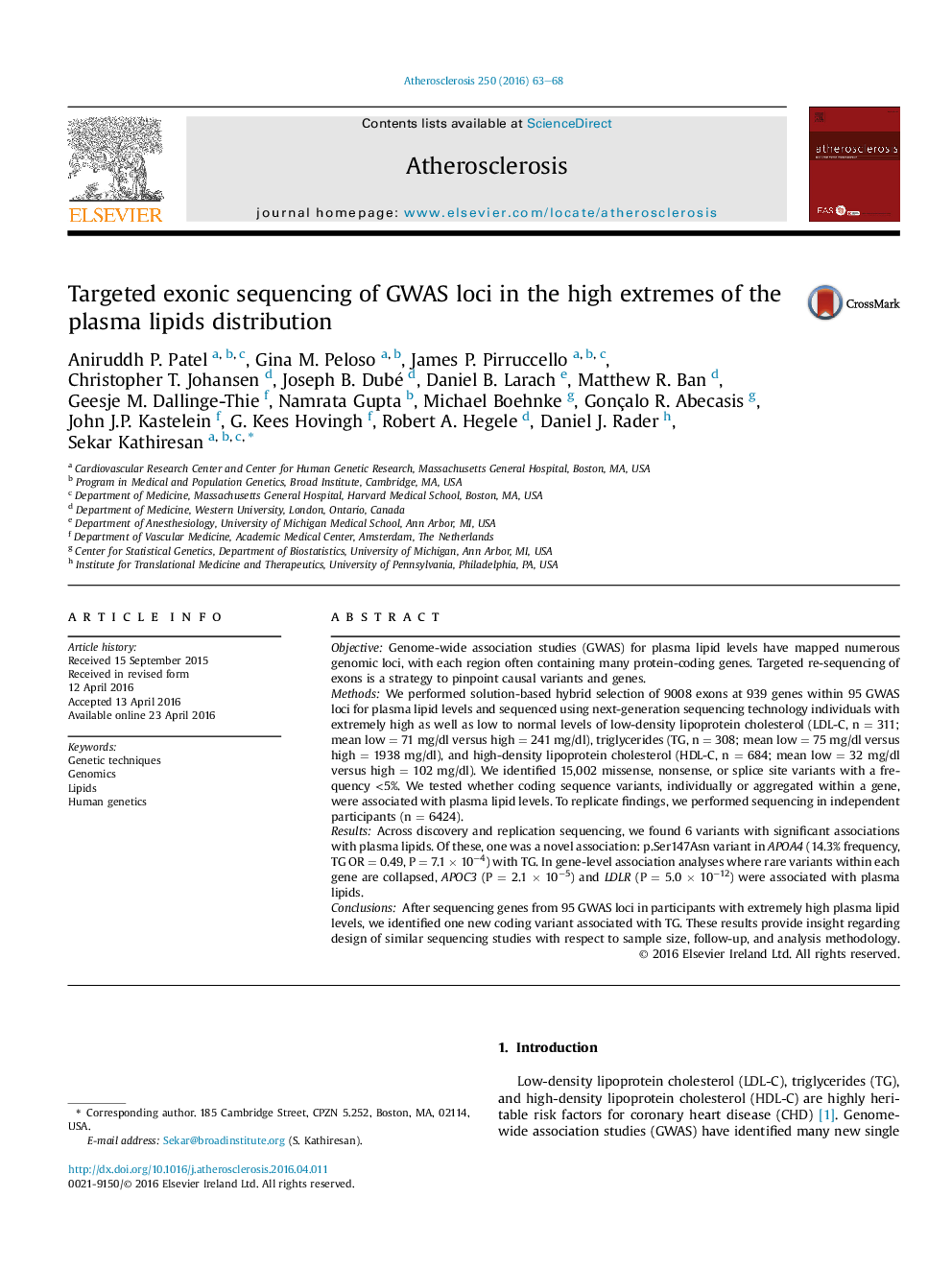| Article ID | Journal | Published Year | Pages | File Type |
|---|---|---|---|---|
| 5943137 | Atherosclerosis | 2016 | 6 Pages |
â¢Genes near 95 lipid GWAS loci in people with extremely high and low to normal plasma lipid levels were sequenced.â¢We identified a novel coding variant in APOA4 as associated with plasma TG levels.â¢We did not find new variants/genes associated with lipids at the other 94 GWAS loci.â¢Fine mapping GWAS loci may have limitations in studying the cause of these signals.
ObjectiveGenome-wide association studies (GWAS) for plasma lipid levels have mapped numerous genomic loci, with each region often containing many protein-coding genes. Targeted re-sequencing of exons is a strategy to pinpoint causal variants and genes.MethodsWe performed solution-based hybrid selection of 9008 exons at 939 genes within 95 GWAS loci for plasma lipid levels and sequenced using next-generation sequencing technology individuals with extremely high as well as low to normal levels of low-density lipoprotein cholesterol (LDL-C, n = 311; mean low = 71 mg/dl versus high = 241 mg/dl), triglycerides (TG, n = 308; mean low = 75 mg/dl versus high = 1938 mg/dl), and high-density lipoprotein cholesterol (HDL-C, n = 684; mean low = 32 mg/dl versus high = 102 mg/dl). We identified 15,002 missense, nonsense, or splice site variants with a frequency <5%. We tested whether coding sequence variants, individually or aggregated within a gene, were associated with plasma lipid levels. To replicate findings, we performed sequencing in independent participants (n = 6424).ResultsAcross discovery and replication sequencing, we found 6 variants with significant associations with plasma lipids. Of these, one was a novel association: p.Ser147Asn variant in APOA4 (14.3% frequency, TG OR = 0.49, P = 7.1 Ã 10â4) with TG. In gene-level association analyses where rare variants within each gene are collapsed, APOC3 (P = 2.1 Ã 10â5) and LDLR (P = 5.0 Ã 10â12) were associated with plasma lipids.ConclusionsAfter sequencing genes from 95 GWAS loci in participants with extremely high plasma lipid levels, we identified one new coding variant associated with TG. These results provide insight regarding design of similar sequencing studies with respect to sample size, follow-up, and analysis methodology.
